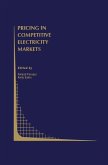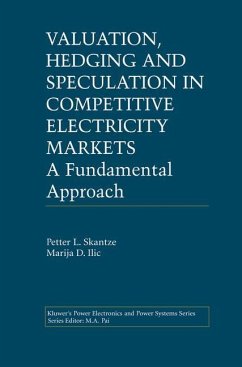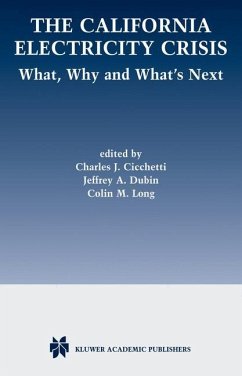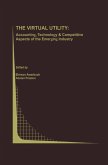This volume contains papers that were discussed at the fust workshop on Markets for Electricity: Economics and Technology (MEET) held at Stanford University on March 7-8, 1997. The workshop's focus was how to design competitive electricity markets in an industry undergoing rapid changes in both economics and technology. We are very appreciative of the generous funding support provided by Dr. Gail McCarthy, Director of Strategic Science and Technology at Electric Power Research Institute. We would like to acknowledge all the workshop participants, including Paul Joskow, Martin Baughman, William Hogan, Robert Wilson, Granger Morgan, Paul Kleindorfer, Shmuel Oren, Edward Kahn, Stephen Rassenti, Stephen Stofl:, Stephen Peck, Victor Niemeyer, Jeremy Bloom, Martin Weinberger and Al Pak, for their significant contributions in discussing these issues at that workshop. CONTRIBUTING AUTHORS Martin L. Baughman is Professor of Electrical and Computer Engineering, University of Texas at Austin. Hung-po Chao is Area Manager of Policy and Risk Analysis, Electric Power Research Institute, Palo Alto, California, and Consulting Professor with Department of Engineering-Economic Systems and Operations Research, Stanford University. William W. Hogan is Lucius N. Littauer Professor of Public Policy and Administration, John F. Keunedy School of Government, Harvard University, Cambridge, Massachusetts and Senior Advisor, Putnam, Hayes & Bartlett, Inc., Cambridge, Massachusetts. Hillard G. Huntington is Executive Director, Energy Modeling Forum, Stanford University, Stanford, California. Paul L. Joskow is Elizabeth and JamesKillian Professor of Economics, Massachusetts Institute of Technology, Cambridge, Massachusetts. Edward P. Kahn is Vice President, National Economic Research Associates, San Francisco, Califonria.
`Pigou vs. Coase. The intellectual fight about the structure of the electricity transmission industry also involves disputes over how centralized or decentralized the transmissiom market can be. Designing Competitive Electricity Markets is an excellent source of insight about these arguments. This book contains thoughtful essays by a who's who of academic electricity experts, including Paul Joskow, Schmuel Oren, William Hogan, Vernon Smith, Robert Wilson, and Hung-po Chao.'
Regulation, 23:3
` This is a rich book on the subject of how to design competitive electricity markets that ranges in style form survey papers of the literature. It provides a good introduction to the subject and will allow readers to familiarise themselves with many of the basic arguments behind the details of electricity market design.'
The Journal of Energy Literature 7:1 (2001)
Regulation, 23:3
` This is a rich book on the subject of how to design competitive electricity markets that ranges in style form survey papers of the literature. It provides a good introduction to the subject and will allow readers to familiarise themselves with many of the basic arguments behind the details of electricity market design.'
The Journal of Energy Literature 7:1 (2001)
`Pigou vs. Coase. The intellectual fight about the structure of the electricity transmission industry also involves disputes over how centralized or decentralized the transmissiom market can be. Designing Competitive Electricity Markets is an excellent source of insight about these arguments. This book contains thoughtful essays by a who's who of academic electricity experts, including Paul Joskow, Schmuel Oren, William Hogan, Vernon Smith, Robert Wilson, and Hung-po Chao.' Regulation, 23:3 ` This is a rich book on the subject of how to design competitive electricity markets that ranges in style form survey papers of the literature. It provides a good introduction to the subject and will allow readers to familiarise themselves with many of the basic arguments behind the details of electricity market design.' The Journal of Energy Literature 7:1 (2001)







